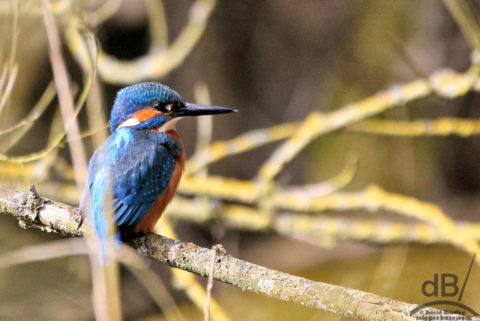The Common Kingfisher (Alcedo atthis) (a.k.a. the Eurasian Kingfisher, and the River Kingfisher is one of seven resident subspecies that range across Eurasia and North Africa. Some do migrate when their rivers freeze although they are mostly resident. There are at least two residing in Milton Country Park, north of Cambridge. Here’s one of them, a male. Is that his tongue poking out? I stalked him and saw him dive for a fish, this snap was moments after that.

The English name has a fairly obvious and yet colourful emtyology. The Kingfisher is a bird that catches fish and it has majestic plumage: an electric blue upper body and head, vivid orange breast, white neck patch and vivid blue streak down its back. Hence fisher king, Kingfisher. The female’s lower bill also is orange-red with a black tip. Mnemonically speaking, many birders refer to this as the female’s “lipstick” so they can sex the bird at a distance or from photographs. The scientific binomial, Alcedo atthis is even more romantic, however.
Alcedo is from the Latin for kingfisher, which in turn comes from the Greek word halcyon. A halcyon was a mythical bird (not a kingfisher) that made its nest on still waters, hence our notion of halcyon days, peaceful days, when a nest might be built even on water. Atthis, of course, was a beautiful maiden from Greek mythology known to be a favourite of Saphos of Lesbos